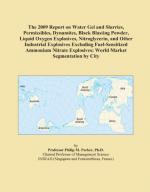|
This section contains 949 words (approx. 4 pages at 300 words per page) |

|
Overview
Nitroglycerin (nye-tro-GLIH-cer-in) is a pale yellow oily flammable liquid that is highly explosive. It is used primarily as an explosive by itself and as an ingredient in dynamite. Nitroglycerin also finds application in medicine as a vasodilator, a substance that causes blood vessels to relax and open up, allowing blood to flow more freely through them.
Key Facts
Other Names:
Trinitroglycerol; trinitroglycerin; glyceryl trinitrate
Formula:
CH2NO2CHNOCH2NO2
Elements:
Carbon, hydrogen, nitrogen, oxygen
Compound Type:
Ester (organic)
State:
Liquid
Molecular Weight:
227.09 g/mol
Melting Point:
13.5°C (56.3°F)
Boiling Point:
Explodes at 218°C 424°F)
Solubility:
Slightly soluble in water; soluble in ethyl alcohol, acetone, and benzene
Nitroglycerin was first developed in 1847 by the Italian chemist Ascanio Sobrero (1812–1888). Sobrero used a method of synthesis that is still the primary means of producing nitroglycerin today. He added nitric acid to glycerol, then and now a popular skin lotion, with...
|
This section contains 949 words (approx. 4 pages at 300 words per page) |

|


